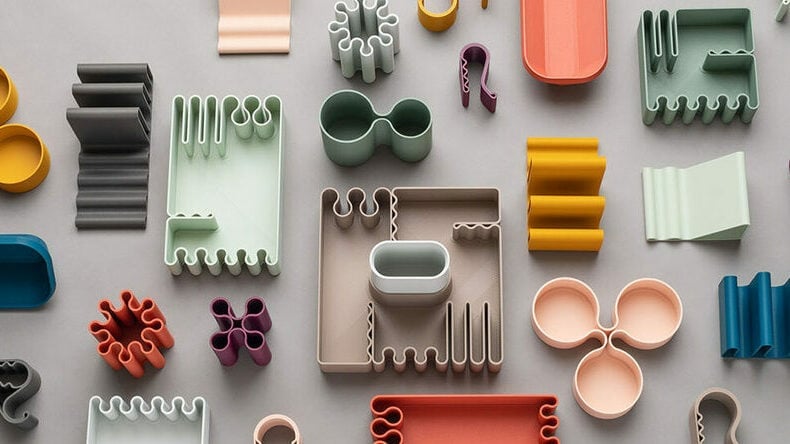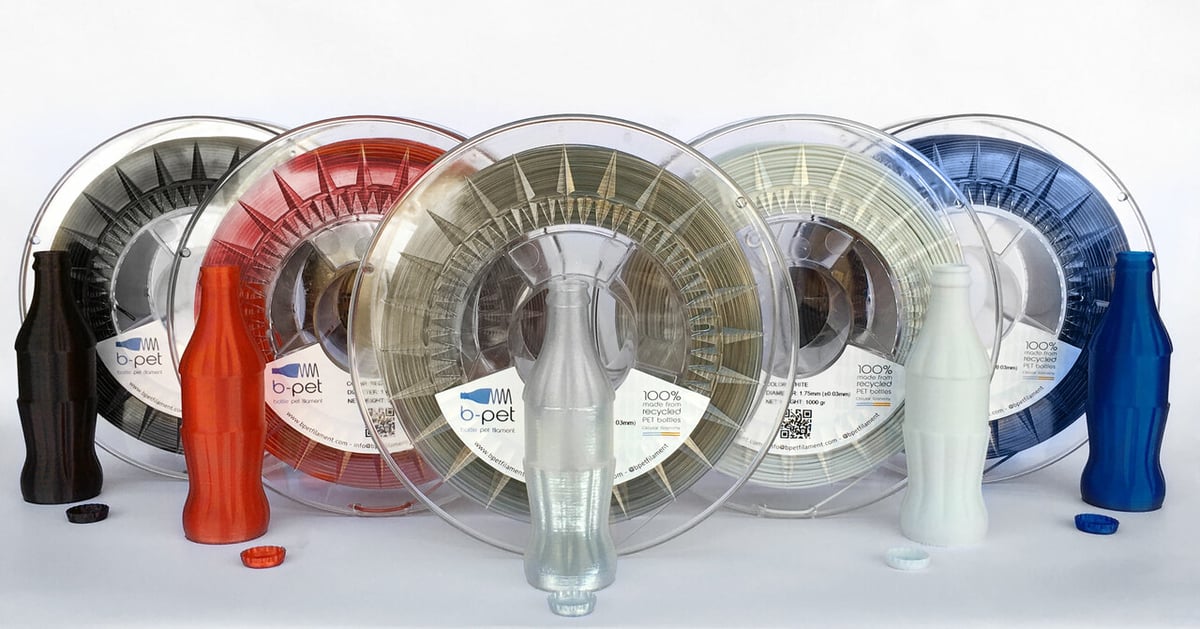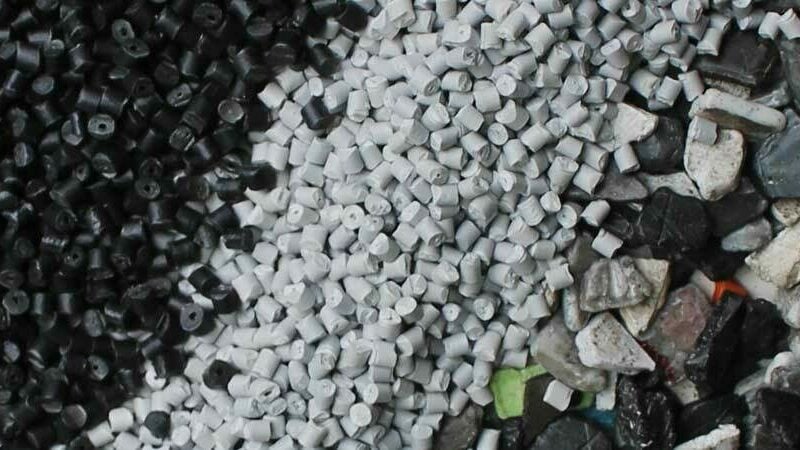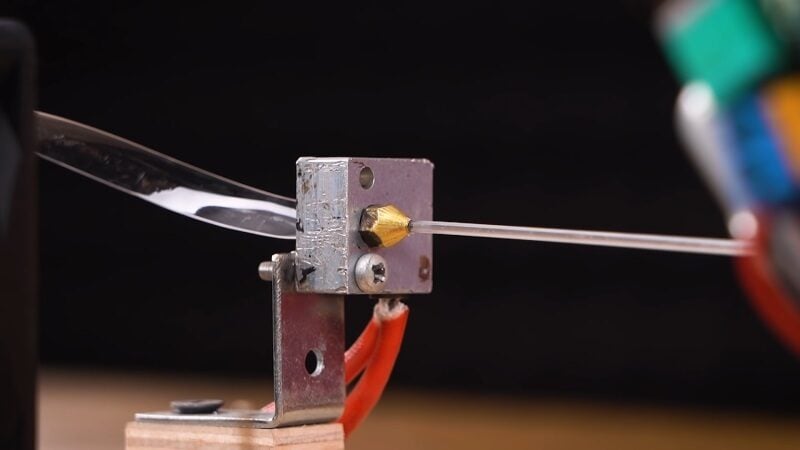Plastic. It’s the primary material of desktop 3D printers, and its production, use, and disposal happen to be a source of great contention in the modern world. This exceedingly useful, typically petrochemically-derived material is able to be melted and formed, has incredible durability, and can even be made to be weather resistant. While this high performance makes it an optimal material for 3D printing, it also has negative implications on its end-of-life and effects on the environment.
Environmentally conscious makers deal with this problem by 3D printing with recycled filament. Simply put, recycled filament is derived either partially or entirely from plastic that has been reclaimed from some previous use, whether it be from water bottles or old 3D prints. You can buy recycled filament directly from a vendor or make it yourself – a great way for a small 3D printing business or an at-home maker space to reduce its waste.
It can be tough to source recycled plastic for 3D printing, especially due to the numerous possibilities and brands available. In this article, we’ll give you a walkthrough on how to get your hands on recycled filament and how to work with it. This way, you can take one step towards reducing your 3D printing environmental footprint.
How Accessible is Recycled Filament?

There are many ways to obtain and print with recycled filament. Some are optimal for those who would like to try using recycled filament and need only two or three kilograms. Other ways are best for 3D printing facilities, small or large, that will need to continuously supply their 3D printers with materials.
Buying Recycled Filament
This is the most straightforward method of obtaining recycled filament. Online vendors deal with the complicated chemistry and testing that accompanies recycled filament manufacturing to offer ready-made spools for typically just over the price of virgin (non-recycled) filament of the same material.
There are a number of companies that offer these recycled filaments. Here are some well-known vendors:
- Reflow: For recycled PLA or PETG filament with over 95% recycled content, look no further than Reflow. They use a process called “wire extrusion” much like typical 3D printer filament manufacturers, but feed it primarily recycled plastic pellets instead of virgin material.
- Filamentive: With a comprehensive list of recycled materials, Filamentive is dedicated to making 3D printing with recycled filament as accessible as possible. They even offer carbon fiber PETG that combines recycled carbon fiber with recycled PETG!
- ReFuel: If you’re ready to embrace all the variations that may come with recycling filament, then ReFuel is a great choice. As a rather straightforward filament manufacturer, they melt down and re-extrude all the scrap that is collected during normal filament production. They promise no specifications, guarantee color variations, and will create and ship recycled filament as-is once it’s manufactured.
DIY Recycled Filament
Another option to get recycled filament is to make it yourself! However, this will require a fair amount of setup, selection, and process design. The basic components include a filament extruder system, a plastic grinding system, plastic pellets, and possibly plastic colorant. It can be quite a time-consuming process to set up and begin producing, but it can reduce the cost of recycled 3D printing material by a considerable amount (over 50% by many estimates, if the price of the filament extruder isn’t taken into account).
There are many suppliers of COTS (commercial off-the-shelf) filament extruders, which allow a user to receive a machine, set it up, and start extruding practically as soon as it arrives in the mail. For a range of different prices starting at about $500 and with high-end machines priced at well over $2,000, COTS filament extruders are a great way to churn out consistent, reliable filament.
Another option would be to build a custom filament extruder. These can be a home remedy for the sometimes-exorbitant cost of COTS filament extruders, and can even rival the performance of COTS with a bit of TLC. There is a range of approaches to take, from purchasable kits to building one totally from scratch, that we discuss in more detail in our best available DIY extruders article.
As a heads up, these projects will require more than just 3D printing skills; a bit of electronics knowledge is necessary to implement the plastic heating control system, and, depending on the project, you might need to have tools capable of drilling through metal.
How Well Does It 3D Print?

Like any other filament, recycled filament print quality depends largely on slicer settings, print conditions, and the quality of the equipment that manufactured it.
Purchasable Recycled Filaments
Commercially available recycled filament is designed to be as printable as regular filament, and can, depending on the color and supplier, produce some rather stunning results. While you’ll save yourself the trouble of setting up your own extrusion system and formulating a filament, you may not see much in terms of cost savings.
Generally speaking, they tend to perform comparably to their non-recycled counterparts. For example, rABS from Fiberlogy is suitable to print anything you would print with regular ABS. ReFlow even has an Instagram account dedicated to demonstrating the gorgeous 3D prints that can be obtained with their rPETG and rPLA.
DIY Recycled Filaments
DIY filaments depend a lot on how much effort was spent on making sure that the filament produced on these machines is high-quality. Inconsistent filament diameter will have a significant impact on the print, as well as including recycled plastic that is too degraded. Consider playing around with the ratio of recycled material to virgin material to find suitable properties for its intended use with a maximized recycle content.
Bad News for Recycling Purists

Unfortunately, recycled 3D printer filament isn’t the complete solution to plastic use and plastic waste. Plastics are susceptible to something called “thermal degradation”, which means heating them up can degrade their properties.
Thermoplastics, the type of plastics suitable for fused deposition modeling (FDM) printing as they can be melted and re-solidified, are composed of long-chain molecules called polymers. This long-chain structure is what gives polymers their unique combination of strong yet flexible properties. Heating these polymers to their melting temperature can also irreversibly reduce the length of the chain, which will be physically reflected by worse mechanical properties. This physical degradation worsens with repeated heating and hardening cycles.
Since the process of both 3D printing and recycling inherently induce thermal degradation, it’s clear that closed-loop recycling is simply not possible with our current technology. Depending on the material and how it’s processed, just one cycle of reuse can be enough to notice a reduction in the quality or strength of 3D prints.
To mitigate this, most 3D printer filament manufacturers incorporate a certain percentage of virgin plastic into recycled 3D printer filament to obtain consistent properties comparable to new material.
Hope for the Future
There are active research efforts towards recycling plastics by chemically breaking down polymers back into monomers, which are essentially the single-unit building blocks of polymer chains. The monomers can then be used as raw feedstock for a new cycle of plastic production free from thermal degradation-induced defects.
Unfortunately, this method of recycling isn’t currently used by filament manufacturers as the technology is still relatively new and debilitatingly energy-intensive. However, with the increase in carbon-free energy accessibility, there remains a promising future for a completely cyclic plastic economy where most “new” plastic is created from reclaimed plastic, much like the process of aluminum recycling.
License: The text of "3D Printers & Recycled Plastic: Can They Print Recycled Plastic?" by All3DP is licensed under a Creative Commons Attribution 4.0 International License.



